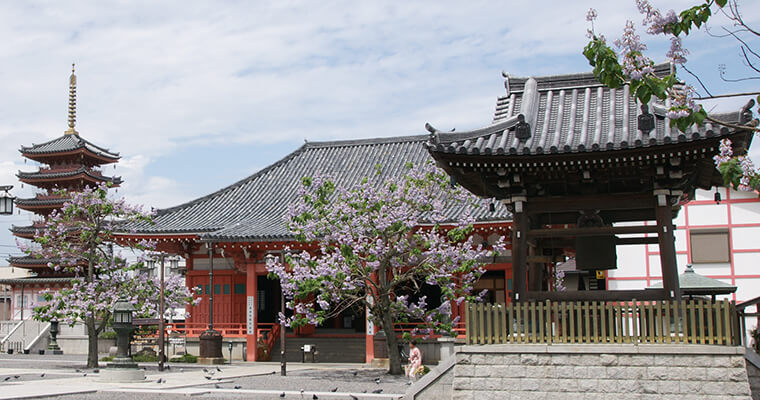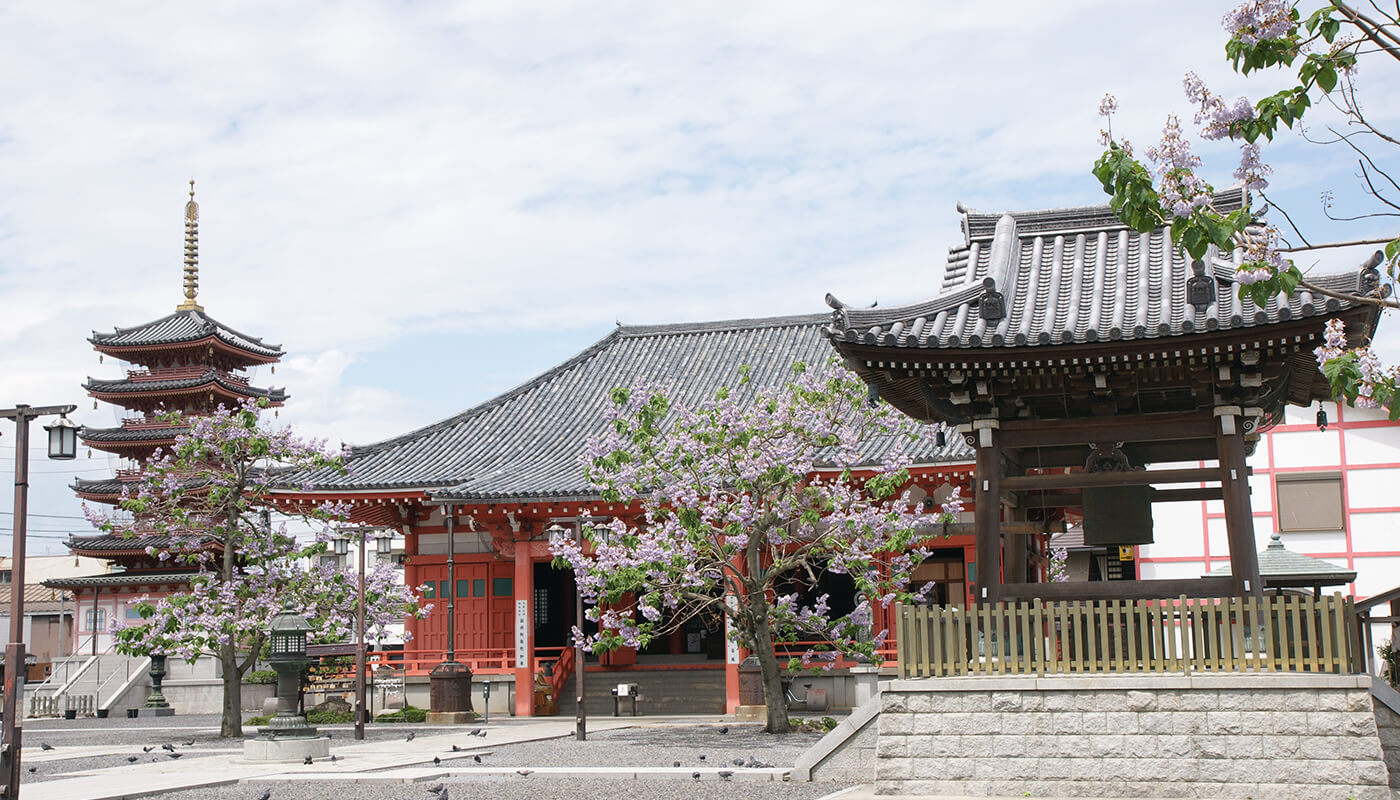Number 14Enichizan Kannon-ji temple
History of the temple
Enichizan Kannon-ji belongs to Shingon sect of Buddhism and is one of the three biggest Kannon temples in Japan. The main statue is a hibutsu (hidden Buddhist statue) Shō Kannon (Sacred Kannon). It also has many cultural properties in its possession.
Since its founding in 709 Enichizan Kannon-ji was very popular among people of Tsu. Later on it also became popular all over the country as a Kannon that answers all prayers. Many devoted believers were coming especially to pray for safety at the sea.
In Muromachi period (1336-1573) shogun Ashikaga Yoshinori (1394-1441), following the Emperor’s command, built a three-storied pagoda. In the 16th Century the second “Great Unifier” of Japan Toyotomi Hideyoshi (1537-1598) would visit Enichizan Kannon-ji and pray for a victory each time he was going to battle.
In the 17th Century since the times of the 2nd shogun of Edo period Tokugawa Hidetada (1579-1632) the temple was protected and supported by all Tokugawa clan shoguns and daimyos of the Tsu province – the Tōdō clan. It would be their special praying place until the 19th Century.
After the Meiji Restoration in 1868, which restored the actual power to the Emperor, Enichizan Kannon-ji lost its protectors and went back to its original shape – a prayer ground for common people. Since then temple became a popular center of worship and place of local entertainment.
The complex consists of: the Kannon Hall, Five-storied Pagoda, the Main Gate (Niō Gate), the Bell Tower, the Goma Hall (Goma/Homa fire ritual Hall), Archives, Storage Room, Hand Purification Place and the Daihō-in cloister. Daihō-in was a cloister connected to the imperial family and since the times of Emperor Gohanazono (1419-1471) prayers for each Emperor were done within its walls. Currently it stands on the western side of Kannon Hall and is used as temple’s office building.
The main statue worshiped in the Main Hall is Buddha Amida (Buddha of Infinite Light) and it is known as Kokufu Amida (Amida of the Provincial Government). There is an old saying: If you don’t pay your respects to Amida, then your Ise pilgrimage is only half-way done. It suggests that Buddha Amida of Enichizan Kannon-ji was considered a Buddhist manifestation (honjibutsu) of Shinto Goddess Amaterasu (the Goddess of the Sun).

Outline
-
Honorific name
Enichizan
-
Temple's name
Kannon-ji
-
Sect
Shingon Daigo branch
-
Religious service
Shō Kannon
(Sacred Kannon)

Details
-
Address
Mie Prefecture Tsu Daimon 31
-
Phone number
059-225-4013
-
Stamp place
Temple's counter
-
Opening hours
8:00 - 17:00
-
Official website




